

More and more people are turning to sewing to avoid throwing away their clothes. Hence, they can repair small patches and make their own creations. If you’ve just started your sewing lessons, you’ve probably heard of iron on and sew on patches. If not, you will certainly hear about them very soon.
In this article, we’ll see how to tell if a patch is iron on and how to fix a hole with iron on mending.
Iron on patches are used in a large majority of sewing pieces, whether they are clothing items such as denim jeans or decorative items such as curtains. It’s a real revolution in the history of couture when it first appeared!
An iron on patch is a woven or non-woven fabric on which is a sticky base that reacts to the heat of the iron. The iron on adhesive is used even in haute couture!
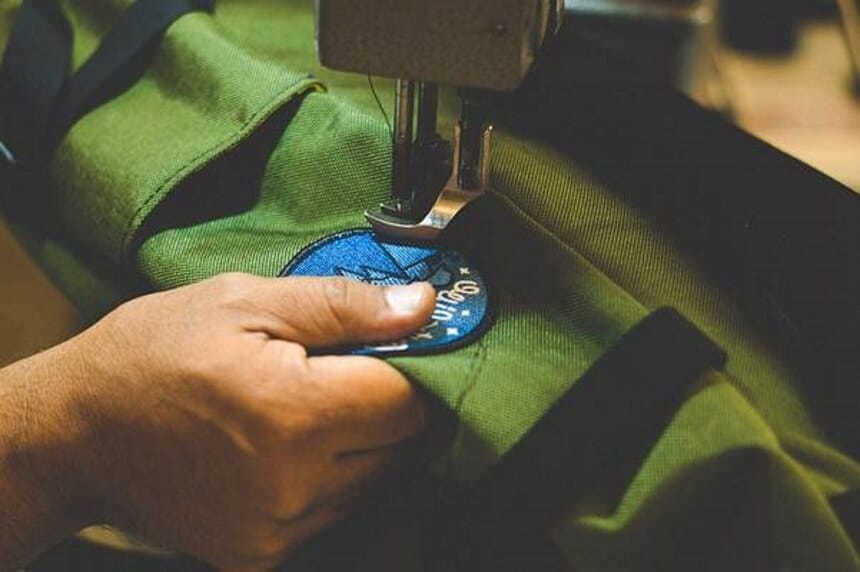 Iron on and sew on patchworks are called interfacing. Patching with iron on stabilizers is called
fusible interfacing
Trusted Source
Interfacing - Wikipedia
Interfacing is a textile used on the unseen or “wrong” side of fabrics to make an area of a garment more rigid.
en.wikipedia.org
, that is, they are fabric patches that can be fixed with glue. Meanwhile, sew on patchworks are called non-fusible interfacing, that is, fabric patches that cannot be fixed on fabrics with heat, but sewn.
Iron on and sew on patchworks are called interfacing. Patching with iron on stabilizers is called
fusible interfacing
Trusted Source
Interfacing - Wikipedia
Interfacing is a textile used on the unseen or “wrong” side of fabrics to make an area of a garment more rigid.
en.wikipedia.org
, that is, they are fabric patches that can be fixed with glue. Meanwhile, sew on patchworks are called non-fusible interfacing, that is, fabric patches that cannot be fixed on fabrics with heat, but sewn.
Sew on and iron on patches look similar when you look at the patchwork from the front. Simply turn the patch over.
Check the back and you’ll be able to know the type of patch it is. Iron on patches have adhesive layers activated by iron heat. However, if the patch looks to be just embroidery work or fabric with no adhesive coating, then it’s a sew onpatch.
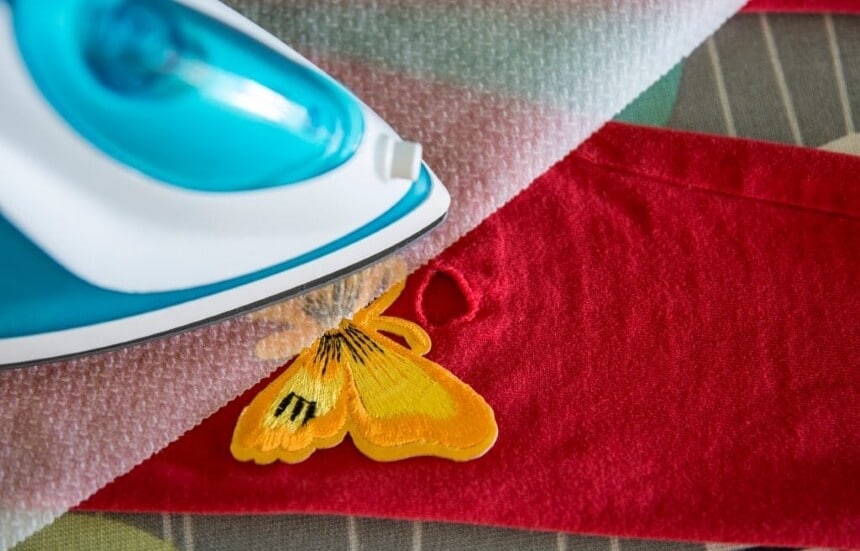 There is plenty to get lost in the large family of iron on stabilizers or stickers. Several types of iron on stabilizer are available for sale. And if no one is there to advise you, it can quickly become a headache. So in front of this vast choice, let’s try to sort it out.
There is plenty to get lost in the large family of iron on stabilizers or stickers. Several types of iron on stabilizer are available for sale. And if no one is there to advise you, it can quickly become a headache. So in front of this vast choice, let’s try to sort it out.
This kind of iron on adhesive is suitable for items such as bags or pouches. As the name suggests, the non-woven iron on patch is not exactly fabric, but rather looks like paper or cardboard. It is therefore quite rigid and can very well be used to reinforce the bottom of a bag for example. It has a base not really adequate to reinforce a garment since it will lose its basic flexibility. This type of iron on can also be thinner, but in this case, is similar to paper.
Unlike the previous one, the woven iron on patch looks much more like real fabric. Which makes it the ideal item for your wardrobe. Its flexibility and lightness do not detract from its role in strengthening the base fabric. It is often very popular with couturiers who can use it in different ways and for several pieces so as not to make a mess.
The fusible interfacing makes any piece of seam waterproof. Be careful, however, because it is plasticized and makes the fabric quite rigid.
Double-sided fusible interfacing is most often used when it comes to removing or blocking holes from jeans or clothing in general. It is very easy to use since it allows two fabrics to be glued together thanks to the two adhesive sides. Just like a double-sided tape.
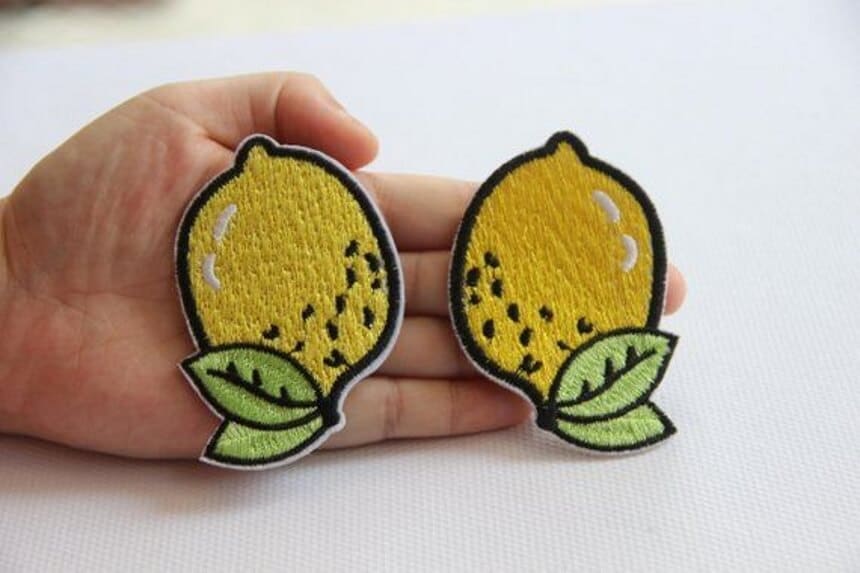 Sometimes sold in the form of an escutcheon or another type of decorative element, the decorative iron on patch allows you to hide a hole discreetly while giving style to the cloth. Guaranteed success!
Sometimes sold in the form of an escutcheon or another type of decorative element, the decorative iron on patch allows you to hide a hole discreetly while giving style to the cloth. Guaranteed success!
This type of iron on seal helps the laziest to pad their production. No need to insert foam and then sew, there is only a glue on the fusible interfacing, and voila!
You can now choose your fusible interfacing with full knowledge of the facts. You will know how to adapt the appropriate material to each of your projects.
Also, note that other types of iron on patches may exist. We have mentioned the main categories but the fusible interfacing is limitless.
The iron on can be found in all good haberdashery shops and even on several online stores. For many couturiers and DIY enthusiasts, the HeatnBond UltraHold Iron on Adhesive is considered the best. It is applicable with low iron heat and is machine washable.
But what cost should we expect? The price range is quite wide when it comes to this type of fabric.
As explained previously, there are several thicknesses that affect the price, but also several types of iron on adhesive.
The stabilizer we recommend above is sold for an under $5 price. For a basic iron on patch, it takes between $2 and $10.
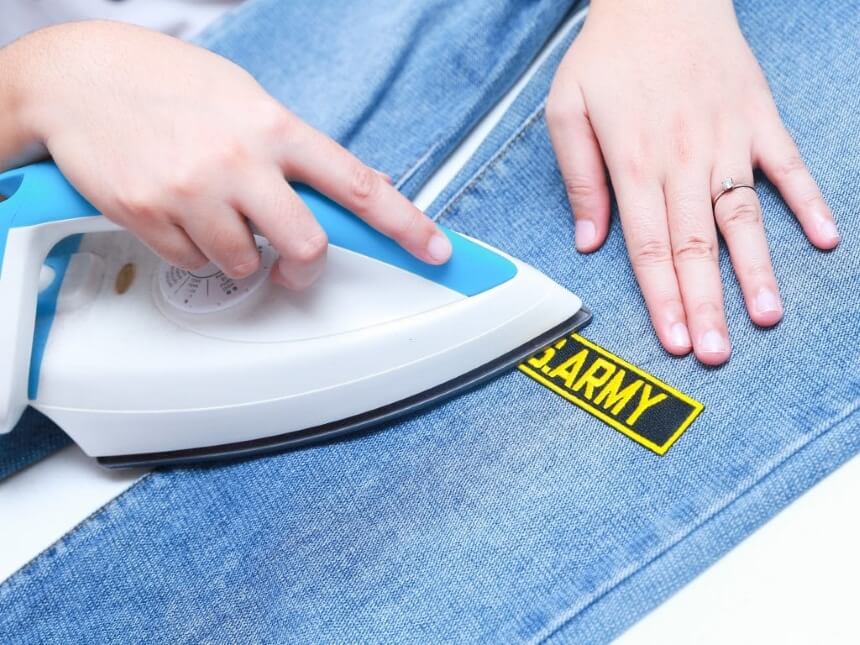 Asides from the iron on stabilizer, you’ll also need a pressing iron for transferring heat into the stabilizer and, thus, activating it. Everyone has a pressing iron at home. But not all irons are suitable for sewing works. The best pressing irons for sewing or interfacing are therefore those with good steam pressure. According to most reviews, the best steam iron for sewing and making iron ons is the CHI 13102 Steam Iron, thanks to its flat iron technology and 400 steam holes.
Asides from the iron on stabilizer, you’ll also need a pressing iron for transferring heat into the stabilizer and, thus, activating it. Everyone has a pressing iron at home. But not all irons are suitable for sewing works. The best pressing irons for sewing or interfacing are therefore those with good steam pressure. According to most reviews, the best steam iron for sewing and making iron ons is the CHI 13102 Steam Iron, thanks to its flat iron technology and 400 steam holes.
Iron on is an easy-to-use material provided you choose the right type of interlining.
Once its use has been determined and the iron on patch purchased, you must then learn how to apply iron on without sewing to avoid obtaining a result far from your expectations. No worries! Here are the main steps to follow to obtain a good result.
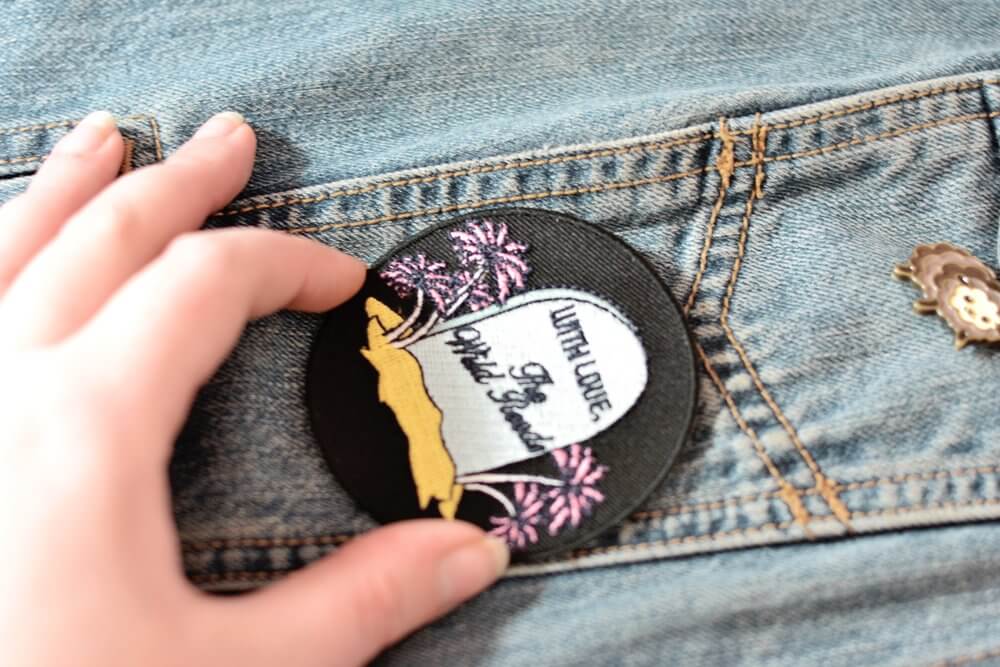 First, define the size you will need, leaving an extra space if the goal is to repair a hole.
First, define the size you will need, leaving an extra space if the goal is to repair a hole.
Cut out the necessary surface then place the iron on patch on the fabric where you want it.
Plug-in your iron into the wall socket and make it heat up.
Place the stabilizer on the hole.
To prevent the glue from spilling onto your ironing board, do not hesitate to put a cotton cloth underneath to protect everything.
You can also use a cotton cloth to protect the glue from the iron. It is very difficult to clean an iron soiled with glue.
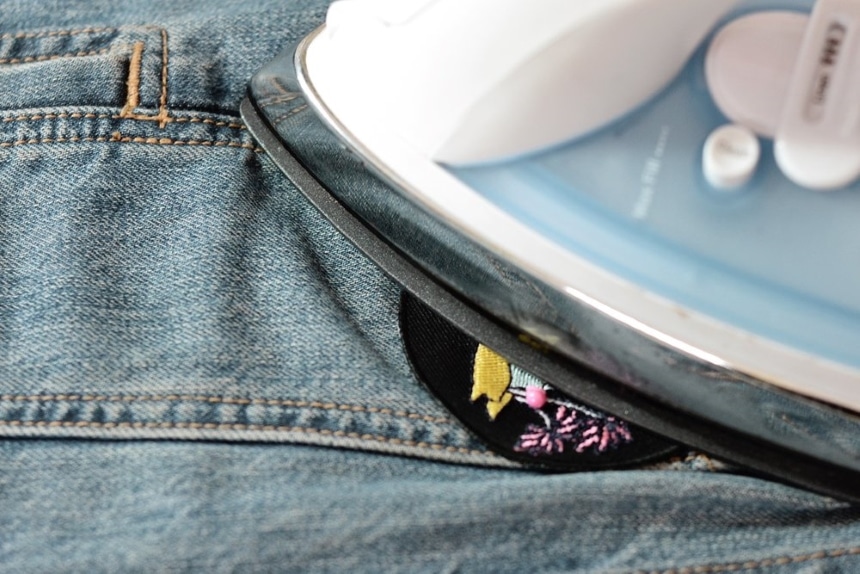 Put your iron on a part of the fabric for about 30 or 40 seconds then change places.
Put your iron on a part of the fabric for about 30 or 40 seconds then change places.
The fusible interfacing acts like glue thanks to the heat. Use your iron to melt the glue through the stabilizer so that it sticks to the fabric. Do not hesitate to press on the whole for more efficiency.
Wait for a moment before checking if all the edges have been glued.
If you want to give your fabric a special and somewhat complex shape, you can cut out the shape after gluing the stabilizer.
For better reinforcement and durability of the patched hole, you may also decide to sew the glued stabilizer with a machine. To do this, you may need to learn the effective ways to sew on a patch.
Making iron on patching is simple and can be done with no sewing knowledge or skill in just a few minutes. All you need is a good iron on stabilizer, a pressing steam iron, and optionally, a sewing machine or thread with a needle. We’ve also seen how to tell if a patch is iron on or sew on.
In view of all the possible uses of an iron on tape, each designer can develop his or her own method and technique. Do not forget to take your time to carry out the operation. Too fast handling can reduce the effectiveness of the iron on adhesive. You can always combine the two types of interfacing (iron on or fusible interfacing and sew onor non-fusible interfacing) to have the best result.